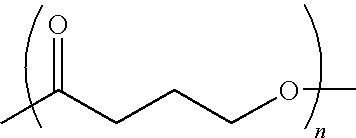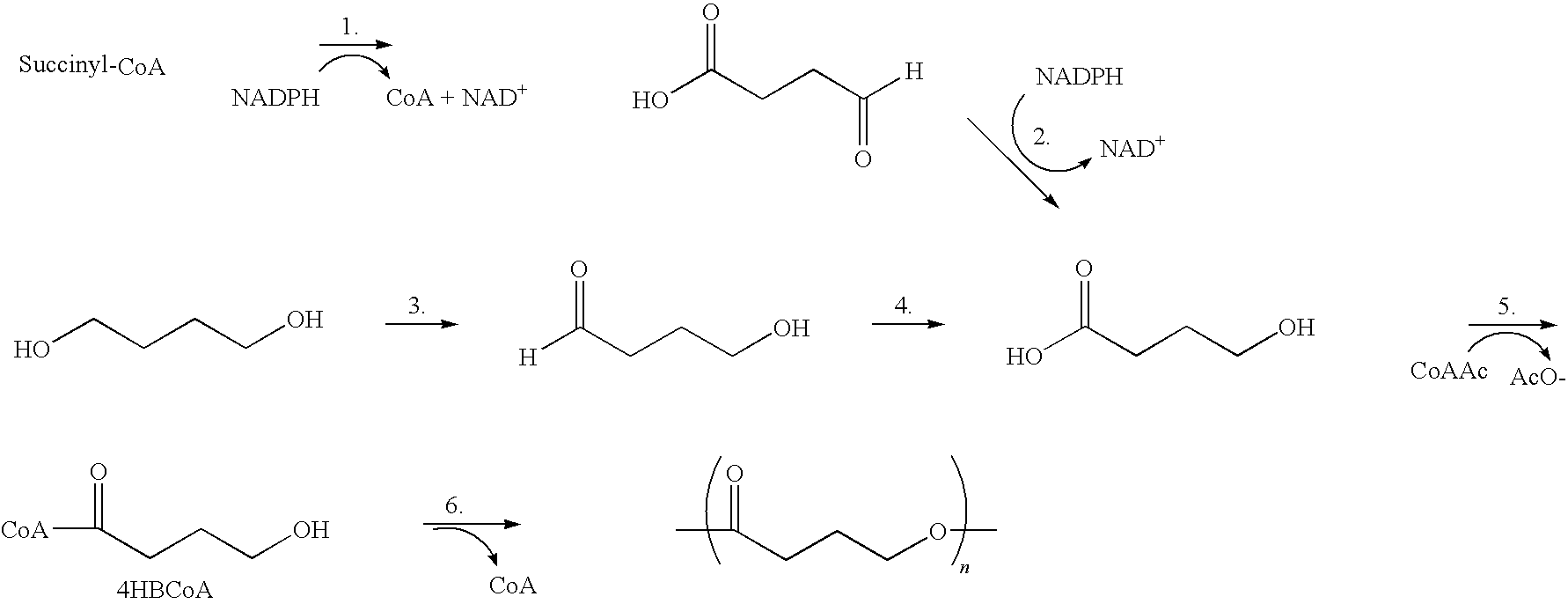Method of making a polyhydroxyalkanoate filament
a technology of polyhydroxyalkanoate and polymer, which is applied in the field of fiber-based medical devices, can solve the problems of inability to produce the polymer with a sufficiently high molecular weight necessary for most applications, restriction of physical capabilities, and inability to long-term implantation of these non-absorbable meshes, etc., and achieves improved handling and methods for making these materials, wide range of in vivo strength retention properties, and improved handling properties
- Summary
- Abstract
- Description
- Claims
- Application Information
AI Technical Summary
Benefits of technology
Problems solved by technology
Method used
Image
Examples
example 1
Melt Extrusion of PHA 4400
[0044]PHA4400 (Tepha, Inc., Cambridge, Mass.) (Mw 575K) was ground into small pieces using a Fritsch cutting mill (Pulversette 15, 10 mm bottom sieve) and dried under vacuum overnight to less than 0.01% (w / w) water. Dried pellets of the polymer were fed into an extruder barrel of an AJA (Alex James Associates, Greer, S.C.) ¾″ single screw extruder (24:1 L:D, 3:1 compression) equipped with a Zenith type metering pump (0.16 cc / rev) and a die with a single hole spinnerette (0.026″, 2:1 L:D) under a blanket of nitrogen. The 4 heating zones of the extruder were set at 140°, 190°, 200° and 205° C. The extruder was set up with a 15 ft drop zone, 48″ air quench zone (10° C.), a guide roll, three winders and a pickup. The fiber was oriented in-line with extrusion by drawing it in a multi-stage process to provide fiber with high tensile strength and a reduced extension to break. The fiber was drawn in-line to stretch ratios of 6 to 11×. A spin finish (Goulston, Lurol...
example 2
Characteristics of Sutures prepared in Example 1
[0047]Tensile mechanical properties of the melt extruded fibers were determined using a universal mechanical tester.
[0048]The mechanical properties of monofilament sutures prepared from non-curling fibers are shown in Table 1.
[0049]
TABLE 1Mechanical Properties of Monofilament SuturesPrepared from Non-Curling FibersDiameterLoad at BreakKnot TensileElongationYoung'sSizemmgkg%Modulus Psi3 / 00.27841482.9560101,5905 / 00.16618001.3164123,6006 / 00.1051100—22310,000
[0050]Surgical meshes were prepared with the sutures. Fabric construction was as follows: Mach #30 Raschel Knit 36 gauge fabric, 150 ends, 16 courses, 40 stitches per inch, using 18 needles per inch. Specifications for the finished fabric were: Weight: 58 g / m2 (1.72 oz / sq. yard), Thickness: 0.29 mm.
[0051]The mechanical properties of surgical meshes knitted from non-curling fibers are shown in the Table 2.
[0052]
TABLE 2Mechanical Properties of Surgical Meshes Knitted from Non-Curling Fib...
PUM
| Property | Measurement | Unit |
|---|---|---|
| Young's modulus | aaaaa | aaaaa |
| elongation to break | aaaaa | aaaaa |
| temperature | aaaaa | aaaaa |
Abstract
Description
Claims
Application Information
 Login to View More
Login to View More - R&D
- Intellectual Property
- Life Sciences
- Materials
- Tech Scout
- Unparalleled Data Quality
- Higher Quality Content
- 60% Fewer Hallucinations
Browse by: Latest US Patents, China's latest patents, Technical Efficacy Thesaurus, Application Domain, Technology Topic, Popular Technical Reports.
© 2025 PatSnap. All rights reserved.Legal|Privacy policy|Modern Slavery Act Transparency Statement|Sitemap|About US| Contact US: help@patsnap.com


